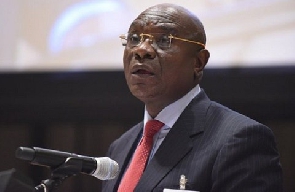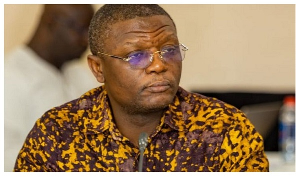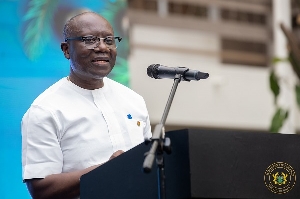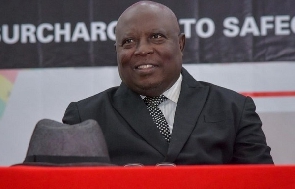By Sydney Casely-Hayford, Sydney@bizghana.com
The Tema Oil Refinery (TOR) debt is a shifting target. Without it’s interest element, the current principal debt is estimated at Ghc1.5billion. This figure includes balances due to Ghana Commercial Bank (GCB), Barclays Bank, Standard Chartered Bank and other TOR notes raised on the commercial markets. According to the Finance Minister Dr. Kwabena Dufuor, the balance due to GCB alone as at December 31, 2010 is approximately Ghc640million.
Government parlayed the GCB debt down by Ghc445million in mid-2010 with a promise to pay the balance “soon”, a date yet to arrive.
On a 20% simple interest basis the interest charge alone on the current principal balance due to GCB is Ghc128million a year and this is an over-simplification of the real charge, just to illustrate the point of this article. The TOR levy recovers approximately Ghc60million a year from the consumer, a figure, which comes nowhere near paying down the debt. At this rate of recovery and simple interest rate, Government will never redeem its indebtedness to GCB from the recovery levy alone, forgetting other creditors.
The TOR debt ballooned to its present figure from socio-political sensitivities of one government to the next. In their attempt to cushion Ghanaians from mismanagement of State Owned Enterprises (SOEs) both NDC and NPP governments have decidedly absorbed crude oil hikes in order not to create undue hardship and by so doing succeeded in creating an image of themselves as pro-poor sensitive interventionists. Now the chickens have come home to roost.
Inevitably, Ghanaians are finally facing the reality of misguided Government policy.
SOEs are a repository for favored Government cronies and used as a basis to support political favors and programs on the quiet. TOR is a prime example. Illiquid and unprofitable, but a useful source of ready cash for political gain. Ergo National Investment Bank (NIB).
Between May 2008 and July 2008, average crude oil prices topped $147 a barrel. Prior to this date, the NPP Government absorbed the excess cost, building up the debt for future redemption. By December 2008, average crude prices dropped to as low as $42 a barrel. The crude price drop between May 2008 and December 2008 was 64% but the ex-pump price was adjusted by only 31% from 118.53 per liter down to 82.00 per liter. The last change in pump prices was after the first round of voting on 12 December 2008. The NPP Government held back passing the full reduction in crude prices to the public until it was politically convenient to do so.
Now, bearing in mind that the TOR debt was inherited from the previous NDC Government, we take a view that there was some debt, which prompted the NPP government to introduce the TOR recovery levy in 2002. Unfortunately, this history is not easily available and it is difficult to determine how the recovery levy was specifically applied to the TOR debt.
With the recent price hikes, gas oil and gasoline have increased by 30% ex-pump and LPG is up 25%. Petrol goes up from 1.1698 to 1.5207, diesel increases from 1.1805 to 1.5346 and LPG now costs 104.76 per kilogram, from 83.81 per kilogram.
However, Government still subsidises LPG to the tune of Ghc9million a month and continues to provide pro-poor intervention for kerosene and pre-mix fuel.
So, even as we raise prices to maintain close to full recovery, we are still doling out with the left hand, bleeding cash in order to impress the poor for their votes.
Government has, since October 1, hedged 50% of its crude requirements at $82.50 a barrel on a 6 month rolling basis. Forget the jargon. What this means is that Government has taken up an insurance policy against the high crude price increases. When prices stay below $82.50 a barrel, Government saves itself some money. Above this line, it costs us some dollars. In addition to this, there is a premium of between 6% and 7% paid to implement the hedge.
Between April and May 2010 crude oil prices hovered slightly above $85 a barrel. From June through end October it stayed within $65 and $85. World crude prices have risen steadily starting November, hovering close to $95 a barrel. The hardening price barrier is on the back of a worsening winter in the West, increased demand from Asia, particularly China and India and the recent floods in Australia. Analysts are predicting $100 a barrel in the 1st quarter of 2011. The fuel hike is practically forced on us.
What matters most is the cost / benefit proposition to this mix of socialism and capitalist model we are experimenting with. By all means there is a need support the poor and alleviate strife in the rural and peri-urban areas but we must think outside the box and apply simple common sense to some simple problems.
How do you pay down a debt when the recovery levy allocated to that debt is inadequate to even satisfy the interest on the principal?
Why continue to give away freebies when we could improve the earning capacity of the poor with proper infrastructure and other business support programs that will enable them to pull themselves up with their own bootstraps.
It would make more sense if we channeled the subsidies on LPG, premix and kerosene into improved feeder road networks and enhance the distribution network to get cheaper food to urban markets and add some value at the farm gate.
The fuel hike has, within two days raised the cost of food in the central markets. If the consumer can absorb this increase with no change in the Consumer Price Index (CPI) or the Producer Price Index (PPI) and if inflation holds at single digits, we have a really big problem. Because this will mean that we either do not have a handle on the economic indicators or Government has found a way to record macro-indicators outside of the data gathering institutions.
If we continue to shy away from making the hard value for money decisions and instead play pro-poor petro-econmics for votes, we defer the burden to settle debt to future generations.
We will realize the impact of the fuel hike in three months.
Opinions of Thursday, 6 January 2011
Columnist: Casely-Hayford, Sydney


















